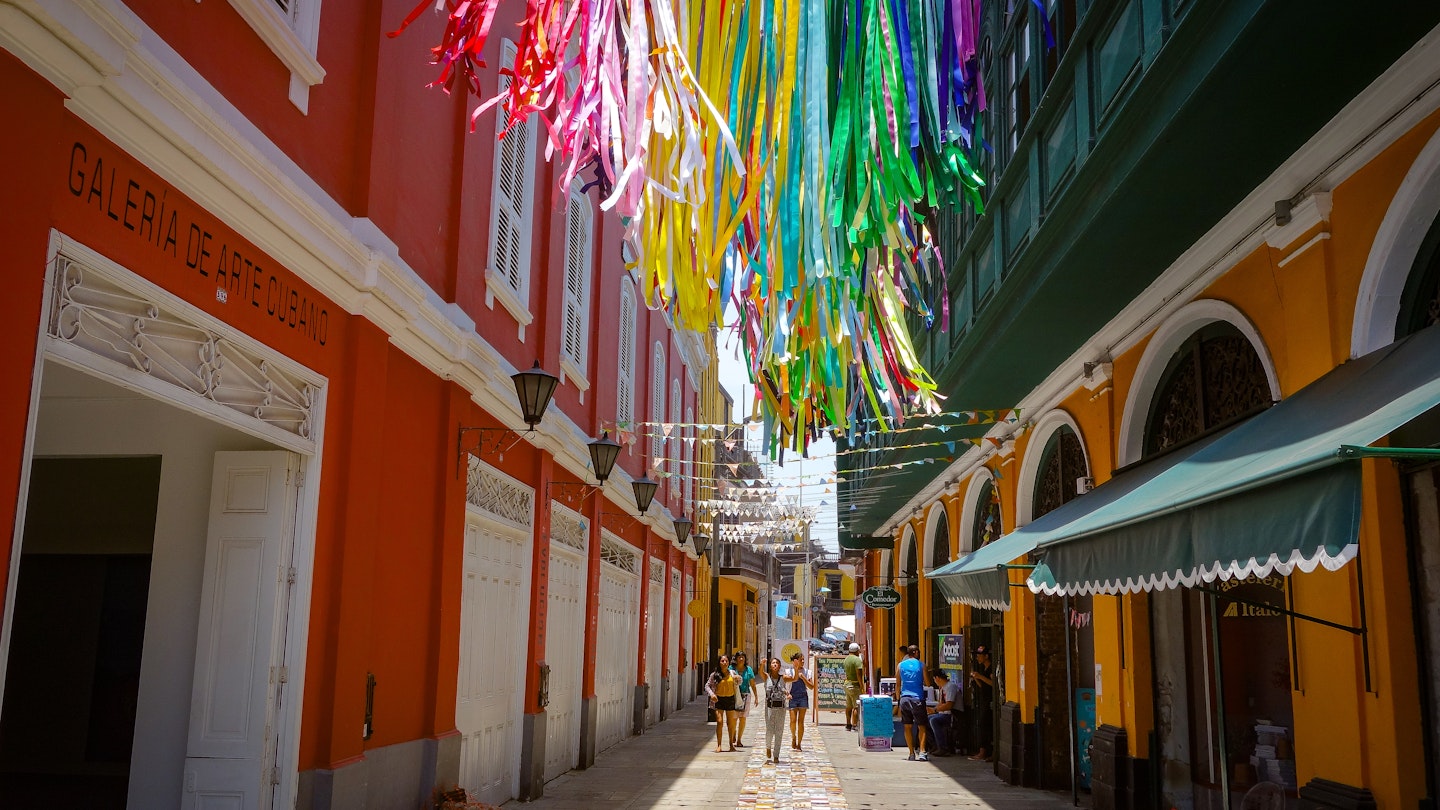Explore Lima’s Cultural Treasures: The Best Museums
Referred to as the City of Kings, Lima is a vibrant metropolitan hub best known for hosting world-renowned restaurants. However, it will also delight and satisfy those with a craving for art and culture. The capital city of Peru is immensely colorful despite its nickname Lima la gris (Lima the gray), as you will discover after visiting any of the numerous galleries and museums. From erotic pre-Columbian ceramics to urban art with a social purpose, be sure to include a visit to these museums, Lima’s very best, on your next trip to Peru.
Expect to Blush at Museo Larco’s Pieces of Ancient Erotic Pottery
Surrounded by a lush garden, Museo Larco rests in a beautifully restored 18th-century house in the traditional Lima neighborhood of Pueblo Libre. Founded in 1926 by Rafael Larco, a pioneer of Peruvian archaeology, visitors can walk among some 30,000 cataloged ancient pottery artifacts.
However, the most captivating aspect is the collection of pre-Columbian erotic pottery. This assemblage is divided into five sections: female body and maternity, sexual union and fertility, male body and sexual propitiation, the underworld, and non-reproductive sexual union. While you may giggle and even blush, this collection offers a unique glimpse into a common activity not often explored when discussing ancient Peruvian cultures.
MALI: A Wide-Ranging Art Collection
Museo de Arte de Lima (MALI) is an all-encompassing museum that showcases the past 3000 years of art in Peru, with over 18,000 pieces in its permanent collection. Covering pre-Columbian, Colonial, Republican, and Modern eras, MALI is iconic for both its artifacts and its dedication to conservation and restoration.
Within its walls, colonial furniture, pre-Hispanic textiles and ceramics, as well as photographs by Martin Chambi, one of Latin America’s first indigenous photographers, are just a few must-see items. Additionally, the building itself showcases exemplary restoration, originally serving as Peru’s National Exhibition in the 19th century. Beyond the 10,000 square meters of exhibition space, MALI also includes a library, shop, café, and offers a variety of courses and workshops.
Get Interactive at MAC Lima: The Best Gallery for Contemporary Art
The Museo de Arte Contemporaneo (MAC) is a striking glass cube located at the entrance of Lima’s bohemian neighborhood, Barranco. Opened in 2013, it stands as one of the youngest cultural centers on this list yet remains one of the best museums in Peru due to its spacious outdoor area and interactive exhibits.
Emerging Latin American artists, as well as international names like photographer David LaChapelle, have showcased their work at MAC. Visitors are likely to tour the three showrooms within an hour, as they are rarely full or open simultaneously. Fortunately, the grassy lawn and on-site café provide a relaxing spot to reflect on this vibrant art scene.
The Catacombs Under Monasterio de San Francisco
One of the oldest catacombs in South America lies just a few blocks from Lima’s main square (Plaza de Armas) in the city’s historic center. Beneath the 16th-century Monasterio de San Francisco, an underground network of pathways leads through what was once the capital’s only cemetery, containing approximately 25,000 crypts, making it believed to be the largest on the continent.
Forget any thoughts of claustrophobia; this memorable tour will teach you about the anti-seismic structure, secret passages, and the legend of the monk who still walks the hallways. Afterward, visitors can ascend to street level to explore the extensive library inside the San Francisco Convent, which is internationally renowned for having a comprehensive collection of books.
Lugar de la Memoria: A Reflection on Recent History
Lima’s Lugar de la Memoria, la Tolerancia y la Inclusión Social (Place of Memory, Tolerance, and Social Inclusion, or LUM) offers essential historical insights for travelers and locals alike, shedding light on the years of terrorism that plagued Peru during the 1980s and 90s. This tumultuous period involved the Shining Path, a communist guerilla group, committing numerous human rights abuses, deeply impacting the social and economic fabric of the nation.
The devastation particularly affected indigenous Quechua-speaking communities in Ayacucho in south-central Peru. Although the topics are challenging and extensive, many LUM visitors find a message of hope and unity that prevents a repetition of such attacks. After exploring the museum, visitors can take a moment to reflect while gazing at the Pacific Ocean from the museum’s Balcony of Anguish on the third floor.
Museo Pedro de Osma: Exceptional Religious Artworks
The vast collection of colonial paintings, furniture, and sculptures at Museo Pedro de Osma exemplifies the Roman Catholic artistic traditions referred to as Cusco and Lima schools. Visitors will also find collections of silverware and some intriguing Inca relics. Nevertheless, the real highlight at Museo Pedro de Osma is the exquisite French-style summer home built in 1906, which showcases original art nouveau stained glass and crystal chandeliers that offer a glimpse into affluent life a century ago.
While exploring the exhibits is rewarding, it’s easy to be captivated by the home itself, situated in well-cared-for gardens that create a serene escape from city life.
Discover Urban Art at Monumental Callao
Although tourists might only pass through Callao when traveling to Jorge Chavez International Airport, this coastal region warrants exploration. Monumental Callao, a social-cultural project initiated to promote positive change through the arts, invites visitors to discover a renovated multi-story 1920s building featuring six galleries and a dynamic array of urban street art.
As you navigate through Monumental Callao with a local guide, prepare to experience a revitalized perspective of Lima while supporting community development initiatives through art.





